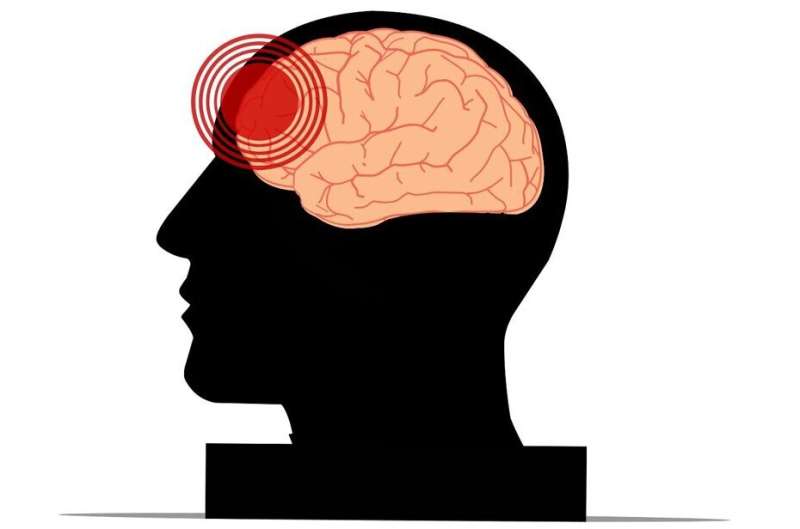This article has been reviewed according to Science X's editorial process and policies. Editors have highlighted the following attributes while ensuring the content's credibility:
fact-checked
peer-reviewed publication
trusted source
proofread
Largest case study in athletes who died young finds evidence of chronic traumatic encephalopathy

A new Boston University Chronic Traumatic Encephalopathy (CTE) Center study has found that, among a sample of 152 young athletes exposed to repetitive head impacts (RHI) who were under age 30 at the time of death, 41.4% (63) had neuropathological evidence of CTE, a degenerative brain disease caused by RHI.
The study published in JAMA Neurology includes the first American woman athlete diagnosed with CTE, a 28-year-old collegiate soccer player whose identity remains private.
"This study clearly shows that the pathology of CTE starts early," said corresponding author Ann McKee, MD, chief of neuropathology at VA Boston Health Care System and director of the BU CTE Center. "The fact that over 40% of young contact and collision sport athletes in the UNITE brain bank have CTE is remarkable—considering that studies of community brain banks show that fewer than 1% of the general population has CTE."
Nearly all the young athletes had mild CTE, stages 1 and 2; three donors had CTE stage 3. (There are four possible stages of CTE with stage 4 being the most severe). In those with CTE, there was often other evidence of brain injury, including the presence of a cavum septum pellucidum, enlargement of the ventricles, and more perivascular macrophages in the white matter.
Clinical symptoms were common among the athletes, whether or not they had CTE. Clinical symptoms included depression (70.0%), apathy (71.3%), difficulty controlling behaviors (56.8%), and problems with decision making (54.5%). Substance abuse also was frequent, with alcohol abuse present in 42.9% and drug abuse in 38.3%.
"The study suggests that some of the symptoms these young athletes are experiencing are not caused by the early tau pathology of CTE," said McKee. "It is imperative that young athletes who are experiencing neuropsychiatric symptoms seek out care, as it is likely that the symptoms can be reduced with effective management and follow-up."
Amateur athletes comprised 71.4% of those diagnosed with CTE, and included American football, ice hockey, soccer and rugby players, and wrestlers. Those diagnosed with CTE were older (average age at death 25.3 years vs. 21.4) and had significantly more years of exposure to contact sports (11.6 vs. 8.8 years).
Like all brain bank studies, the brain donors are different from the general population of young athletes, in part because they are more likely to have symptoms. CTE cannot yet be diagnosed in the living, and the true prevalence of CTE in any population remains unknown.
"This study highlights the importance of assessing the symptoms and clinical presentation of CTE in living athletes who have sustained repetitive head injuries," said Nsini Umoh, Ph.D., program director for traumatic brain injury (TBI) research at the National Institute of Neurological Disorders and Stroke (NINDS). "While additional research in this area is needed, these findings are a notable addition to the body of research on CTE."
Further needed research includes analyzing young brain donors not exposed to contact and collision sports, to better understand non-CTE brain damage from RHI, and what symptoms are related to concussions, RHI, and CTE.
More information: Neuropathological and Clinical Findings in Young Contact Sport Athletes Exposed to Repetitive Head Impacts, JAMA Neurology (2023).





















